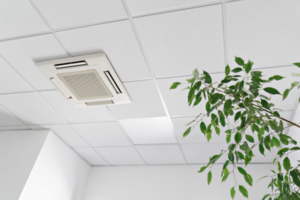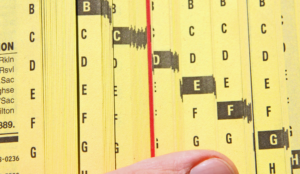If you’ve ever cracked open a wall to find a science project’s worth of mold colonies hunkered down, you know how nasty this stuff can get. Mold shows up uninvited, stays longer than your in-laws, and wreaks havoc on your home and health. The usual fast-track approach? Bleach everything in sight and pray. But if you’re trying to reduce your carbon footprint without sacrificing the health of your home, there’s good news. Sustainable mold-proofing is not only possible, it’s smart if you’re playing the long game.
Eco-conscious home care doesn’t mean sacrificing effectiveness. In fact, mold prevention rooted in sustainability is often more thorough because it focuses on long-term fixes instead of crash cleaning sessions. We’re about to break down how you can block mold using green cleaning products, healthy building materials, smarter air systems, and habits that don’t fry the planet while fighting fungi.
Natural cleaners with real mold-fighting power
Why go all Mad Scientist when nature already has some serious firepower? Eco-friendly cleaning products are a go-to tool for anyone trying to prevent mold without blitzing their lungs or killing their indoor plants from the fumes. Unlike chemical formulas that smell like they belong in a crime scene cleanup, natural methods come without the hazardous side effects.
Vinegar is a heavy hitter. White distilled vinegar is mildly acidic and can kill about 80% of mold species. It’s that introvert in your pantry quietly pulling its weight. Spraying it undiluted on hard surfaces where moisture likes to linger—think window frames, bathroom grout, under sinks—can stop mold from forming in the first place. Got a stubborn patch? Let the vinegar sit for an hour before scrubbing and rinsing. No guilt, no gas mask needed.
Tea tree oil is another green warrior, albeit the more expensive cousin in this eco-friendly family. Mixed with water in a spray bottle, it doesn’t just remove existing mold but also discourages future growth. Bonus: your home ends up smelling like a high-end spa rather than a janitor’s closet.
Hydrogen peroxide (3%) isn’t just for scrapes. It can foam its way into porous surfaces where mold loves to squat, breaking cell walls without introducing poisons into your home. Let it sit before scrubbing like your reputation depends on it.
Just because it’s natural doesn’t mean it’s weak. Natural cleaners, especially when used regularly, help keep surfaces unwelcoming for mold without the environmental damage of bleach or ammonia-containing sprays.
Sustainable building materials that resist mold
If your home is made of materials that basically curl up and die at the mere hint of humidity, no cleaning product is going to save you forever. Outdated construction methods used drywall, wood, and insulation that seemed almost like mold food. Long-term prevention means picking materials that mold dislikes from the get-go.
Cement backer board is often used in bathrooms or areas with high moisture. Unlike drywall, it doesn’t absorb water, which means mold doesn’t have a sponge to latch onto. Hempcrete is another contender—yes, industrial hemp can be used in building. It’s breathable and naturally resists moisture buildup.
Recycled metal studs instead of wood studs in framing can minimize organic materials mold can feast on behind the scenes. Mold needs cellulose or porous material to grow. Metal? Not on its menu. Install once, worry less.
Low-VOC (volatile organic compounds) paints and sealers should cover your surfaces. Regular paint traps moisture inside walls and ceilings. Low-VOC alternatives allow them to breathe and dry out properly, cutting down the chance of mold throwing a house party inside your drywall.
For insulation, steer toward options like sheep’s wool or recycled denim which have natural moisture resistance and don’t contain chemicals that off-gas into your home. Mold doesn’t like insulation that dries easily and doesn’t break down over time. A dry wall cavity is a happy one.
Airflow and climate control for prevention
Let’s get real—mold thrives in still air soaked with moisture. If your home feels like a sauna half the time, congratulations: you’ve created prime mold habitat. Fortunately, sustainable climate control can regulate your home’s microclimate without mortgaging your soul to the electric company.
Energy-efficient dehumidifiers are small, powerful tools with big impact. They suck in the damp, spit out the dry, and cut down on condensation-style drama. Look for Energy Star certified models to keep your electric bill from demanding its own zip code.
Whole-house ventilation systems keep air moving throughout your home so no corner becomes forgotten. HRVs (heat recovery ventilators) and ERVs (energy recovery ventilators) are smarter choices for green homeowners looking to balance indoor air quality with efficiency. They run continuously, swapping stale indoor air with filtered outdoor air while regulating temperature and humidity levels.
Ceiling fans are old-school helpers, and opening windows works wonders during dry weather. Installing trickle vents in newer windows gives you passive air movement even when shut, which adds up over time. Smart thermostats can help fine-tune everything without burning energy like it’s 1999, making incremental changes that equate to big mold-prevention wins.
Common mistakes that attract mold
You might think you’re doing everything right while actually rolling out the red carpet for spores. Certain daily habits encourage mold growth even if you’re using green paint and spritzing vinegar like you’re marinating a salad.
Let’s talk about showering. If steam lingers in your bathroom like it pays rent, you’re creating the perfect conditions for mold in your grout, behind your tile, even inside walls. Skip the fluffy rugs in the bathroom if they never really dry. That adorable jute bath mat you snagged on sale? Mold magnet.
Kitchen habits matter too. Using a stovetop without flipping the vent hood fan is asking for humidity build-up. Keep those filters clean and the airflow moving. Overwatering houseplants, letting wet laundry sit in washer purgatory, drying clothes indoors without ventilation—these things set you up for a moldy mess.
Make it a point to fix leaks fast. We’ve seen 2-day leaks turn into 2-week disasters once mold gets involved. A small drip in a vanity can turn the liner, wood, cabinet, and wall all into one big fungal buffet. Catching it early is not optional; it’s how you avoid war stories.
Green habits that make a difference over time
Prevention isn’t about the occasional deep clean. It’s about developing eco-conscious home care routines that catch issues before they escalate. Think like mold—then make your home as unappealing as possible to it.
Clean out vents and ducts regularly. Gross gunk in your HVAC system can push mold spores through your house every time you hit the thermostat. Change air filters often, especially after allergy season or renovations. Use indoor plants that reduce humidity levels rather than increase them. English ivy, peace lilies, and Boston ferns actually absorb moisture from the air. Not too shabby for décor.
If your house floods or you have significant water intrusion, dry it out immediately using eco-friendly fans, absorbent materials, or a green-certified restoration team that understands sustainable mold-proofing. Don’t wait for that earthy smell to tell you it’s already taken up residence.
Store things in breathable containers, not plastic bins that trap humidity. Push furniture an inch away from outer walls so you allow airflow. Rotate the cleaning of closets, behind furniture, and under appliances so no dark, still corners get missed for too long.
When professional help fits into an eco strategy
Sometimes, the mold wins. When you’re facing advanced issues or hidden growth inside ducts, attics, or walls, calling in help is the smart play. But even this part doesn’t have to be at odds with your green game plan.
Seek restoration companies that use non-toxic removal methods. These pros often use enzyme cleaners or plant-based antimicrobial solutions that don’t send pungent chemical clouds sweeping through your home. Air scrubbers with HEPA filters are standard for eco-conscious restoration jobs, helping capture spores during remediation. No sense kicking up mold just to watch it settle somewhere else.
A contractor that understands the value of sustainable choices might suggest replacing materials like insulation and drywall with mold-resistant options, not just slapping on some paint and calling it a day. This is about long-term health outcomes, for you and the house.
Working with professionals doesn’t disqualify you from being eco-responsible. In fact, it often means you’re attacking the root problem without overcompensating somewhere else. Peace of mind doesn’t have to smell like bleach and throat irritation for a week.
Mold prevention that doesn’t trash the planet
Sustainable mold control works because it focuses on fixing the conditions that foster growth. It’s not just about killing spores—it’s about kicking mold out and changing the locks. By using eco-friendly cleaning products, installing smarter climate systems, choosing better materials during remodels, and adopting healthier daily habits, you create a home that stays clean, breathable, and bacteria-spore free for the long haul. Mold can’t thrive if the house is dry, well-ventilated, chemically safe, and built with materials it can’t consume.
Most people wait until mold becomes a five-alarm emergency before doing anything about it. With the green angle? You’re already ahead of that mess. Best part? You don’t need to sacrifice your values or fill your lungs with fumes to win the fight.







